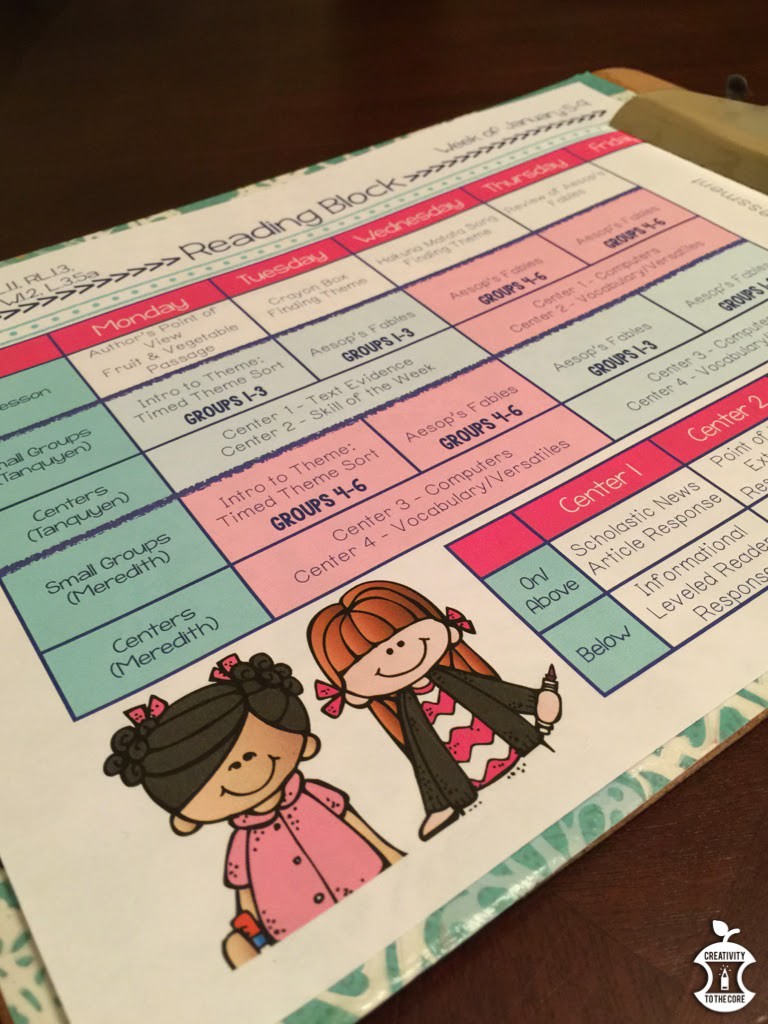 It’s been about a month since I began the leap from first to third grade, and I am loving it! Last year, I taught high achieving first graders who were almost (if not, just as high) as my third graders. So thankfully….the leap wasn’t too difficult. 🙂
It’s been about a month since I began the leap from first to third grade, and I am loving it! Last year, I taught high achieving first graders who were almost (if not, just as high) as my third graders. So thankfully….the leap wasn’t too difficult. 🙂
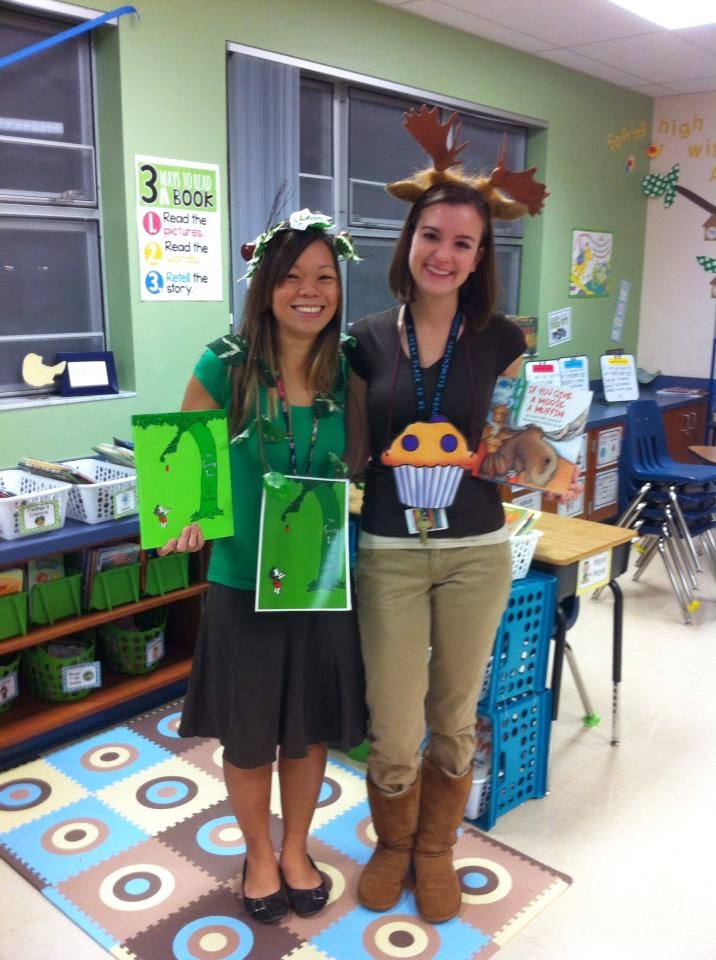 |
| My friend and now co-teacher last year in my first grade classroom. |
Co-teaching with one of my best friends and another energetic, hilarious, engaging teacher has been an amazing experience. We are each other’s physical, mental, and emotional help each day…which in the teacher world can be a wonderful thing! Today, I wanted to share a few of the things we have been doing…
Schedule
In our county, 18 is the maximum amount of students allowed in each classroom. Both third grade classes that I work in have about 25 students. Therefore, the school had to hire an extra teacher (me!) to work in both classrooms and provide support. I am teaching only reading. I begin each day with one teacher, and begin after lunch with the other. The three of us have synced our schedules. This way, I am teaching the same lessons when I am in both classrooms. It is SO nice for the three of us to plan together and bounce ideas off of each other! Here’s the layout we have. Grab an editable one here!
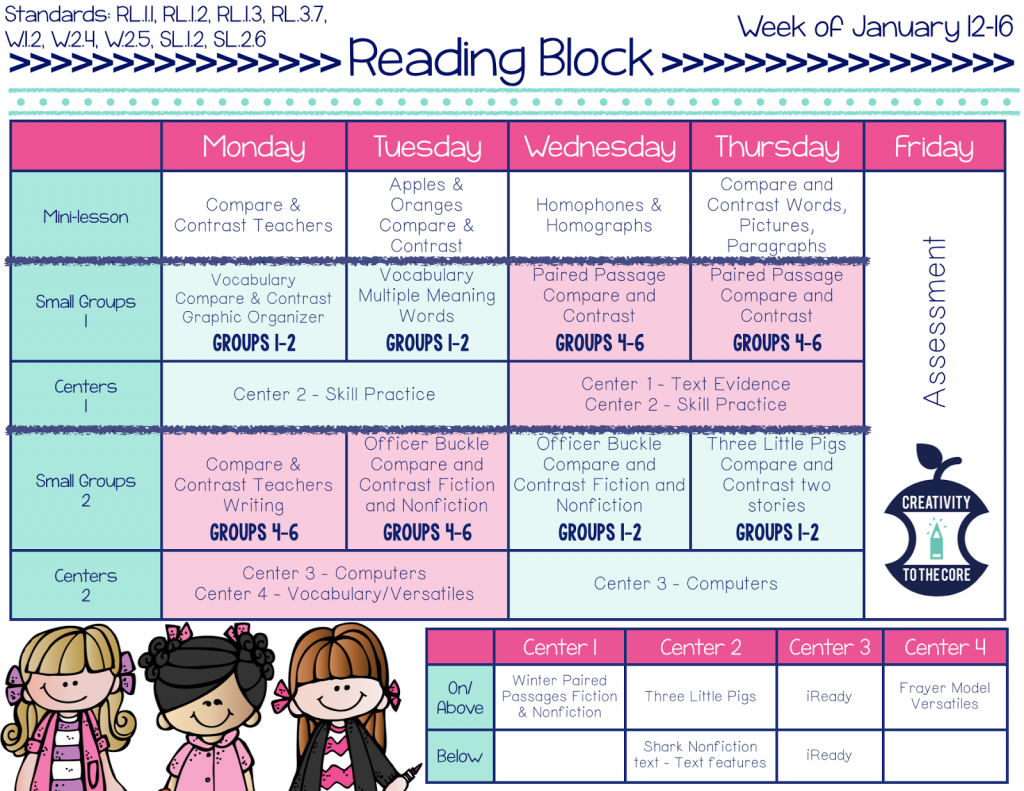
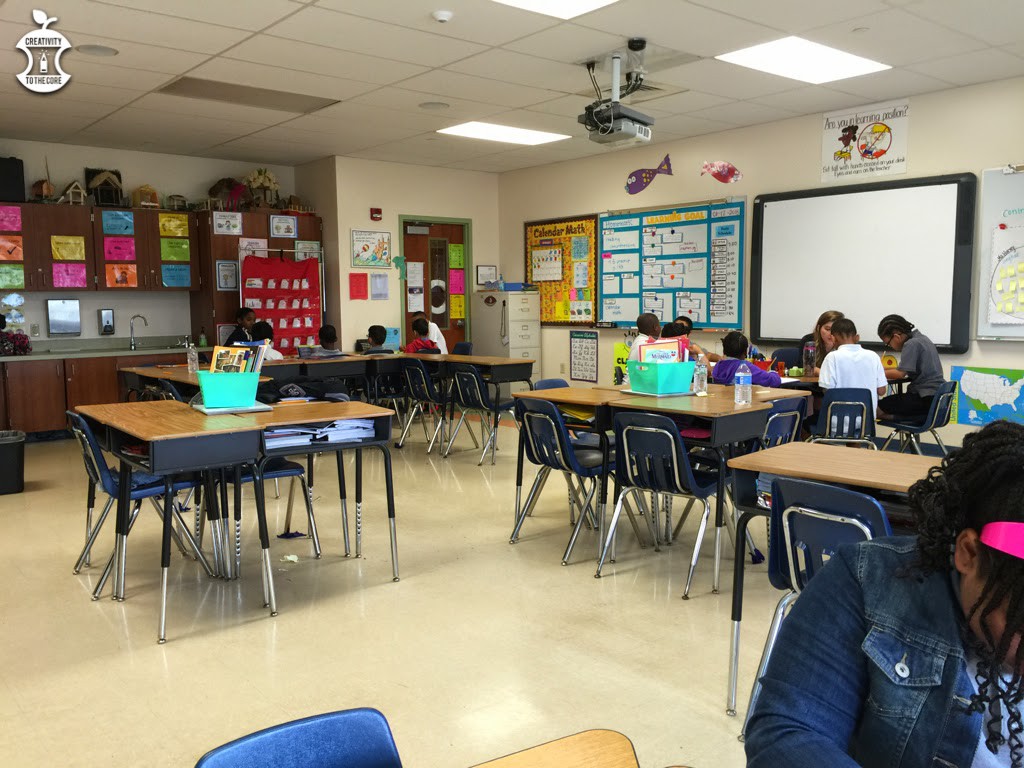
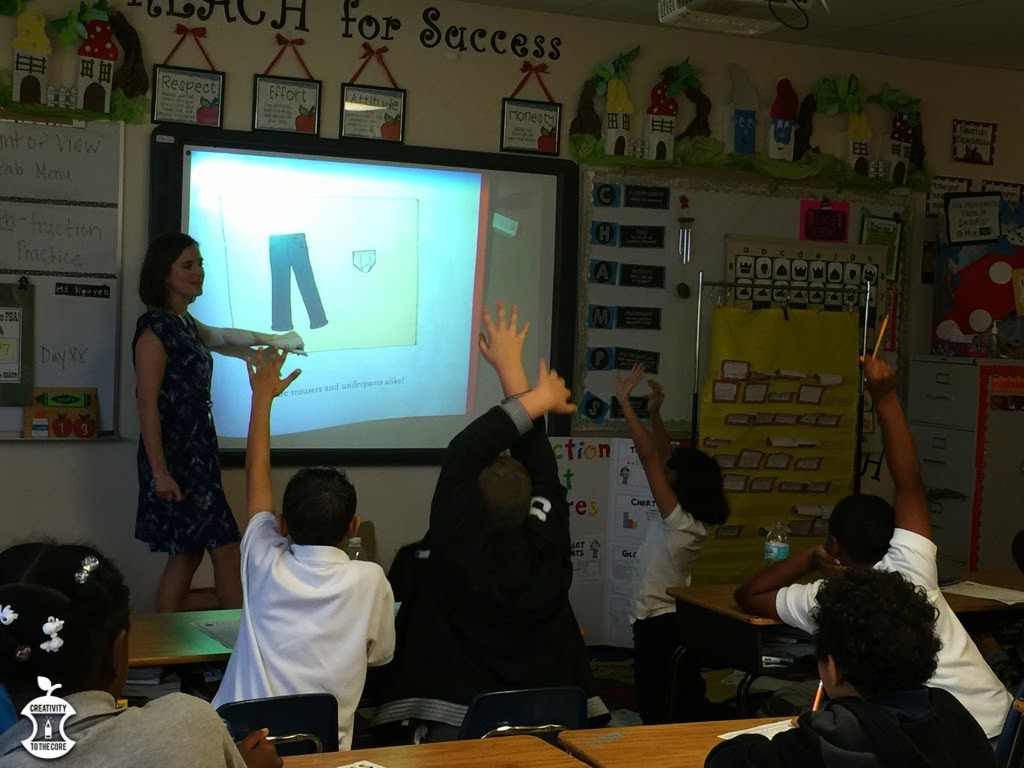
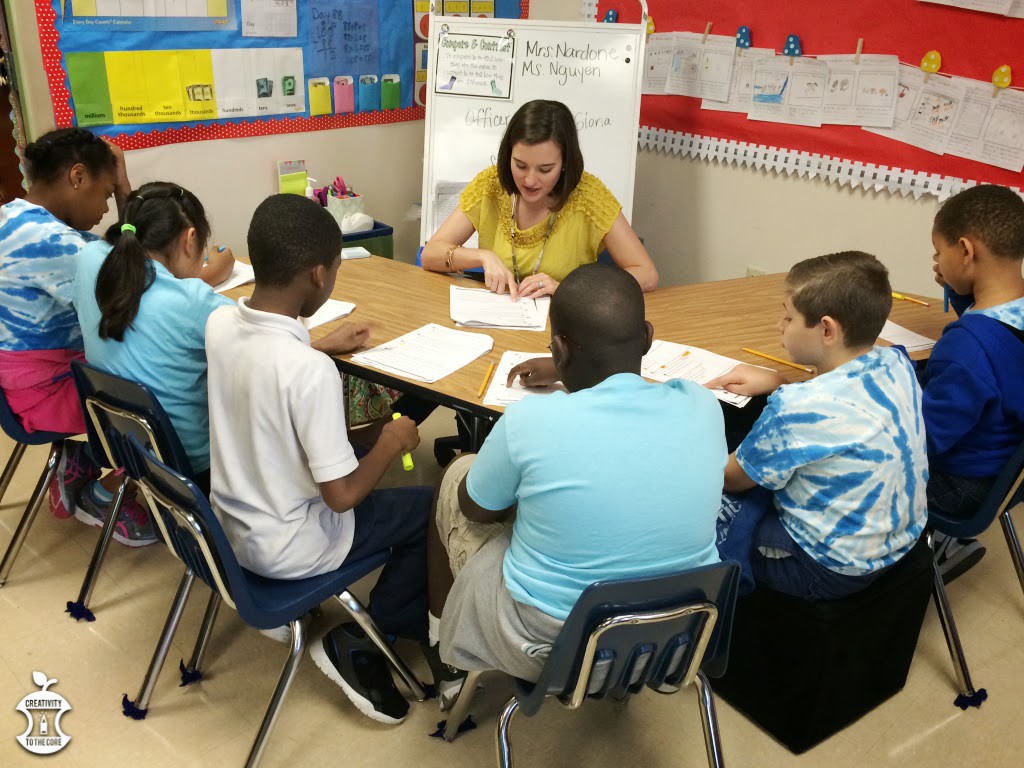
During my first two small groups of the week (on- and above-level students), we are reading the novel, Stuart Little. Here are some of our supplies. You can grab them here. My readers are working SO hard on accountable talk and discussion. Some groups are getting really comfortable with it! One little boy even said, “Hey, you can’t talk so much! You’re suppose to be invisible!”
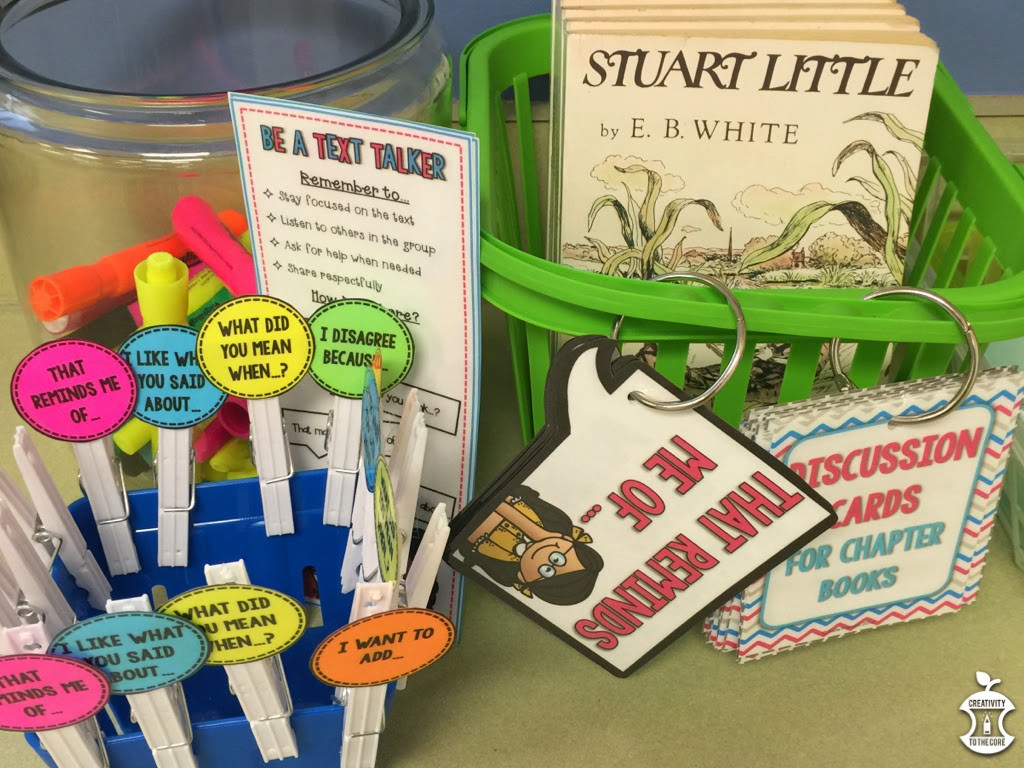
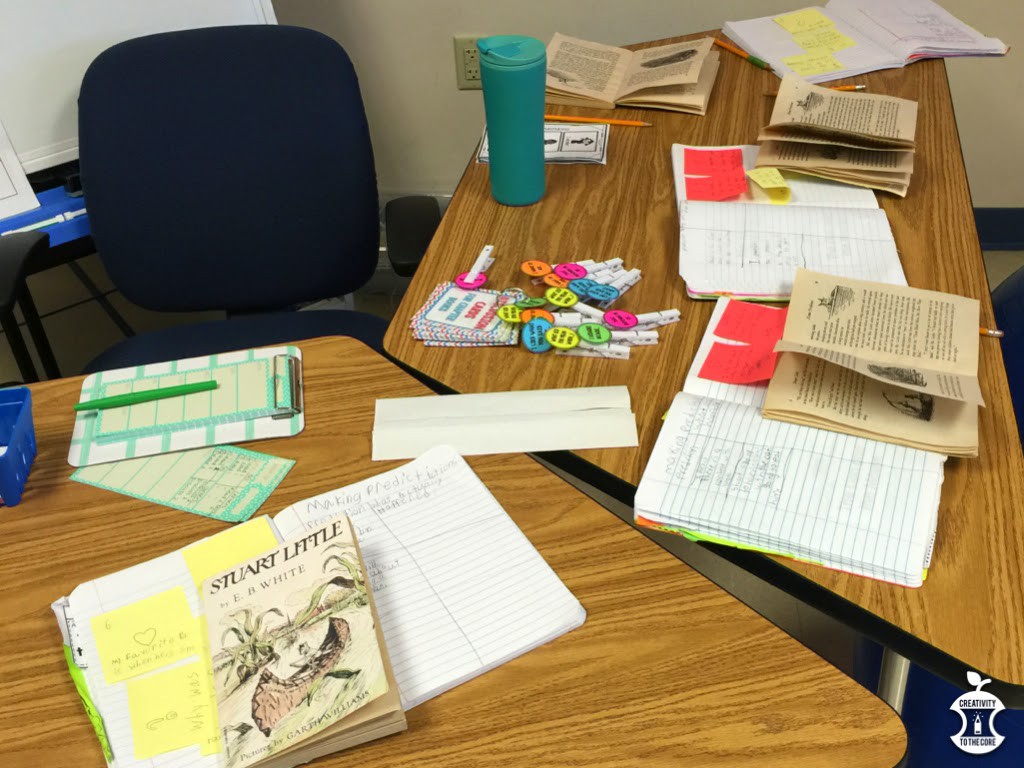
Our on-level students still struggle with writing complete sentences and explaining their thoughts. We do LOTS of writing to try to fix this. Here is a prediction that one of my students made before reading chapter 3. It is not a perfect sentence, but she was working oh so hard!
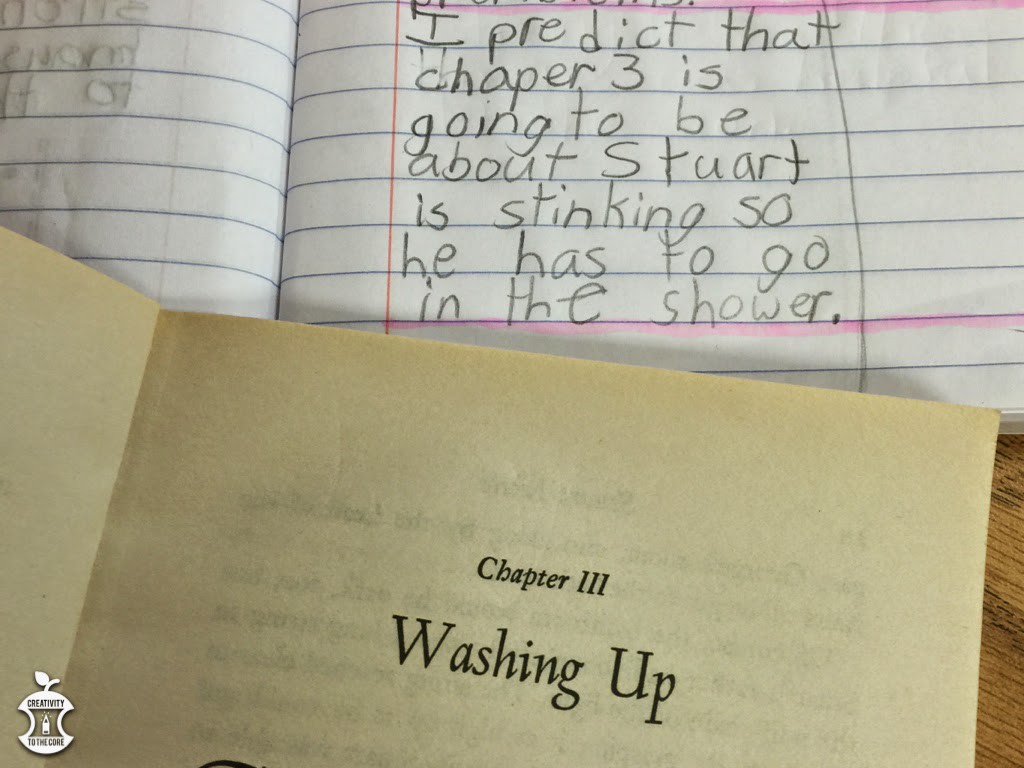
- Computer – We have a program called iReady that is used throughout the school. All students take individualized reading and math lessons on the program during this center.
- Vocabulary/Reading – My novel study groups read their novel, make annotations, and respond to their flippy prompts (blue flaps seen above). When we are not reading a novel, students complete vocabulary activities at this center. Our lower groups do not go to this center because vocabulary is taught explicitly to them in small group
- Skill Practice – This center changes depending on our skill. It is differentiated for the two sets of groups. Sometimes, there are even two separate activities for certain students. This center usually includes writing. Sometimes it has task cards. Overall, it is based on the standard that we are teaching that week.
- Text Evidence – This center is completed only by on and above level students. They are given books or passages and questions. We make sure that they are focusing on finding text evidence and responding in complete sentences with evidence based sentence starters. Paired text passages work very well with students in this center.
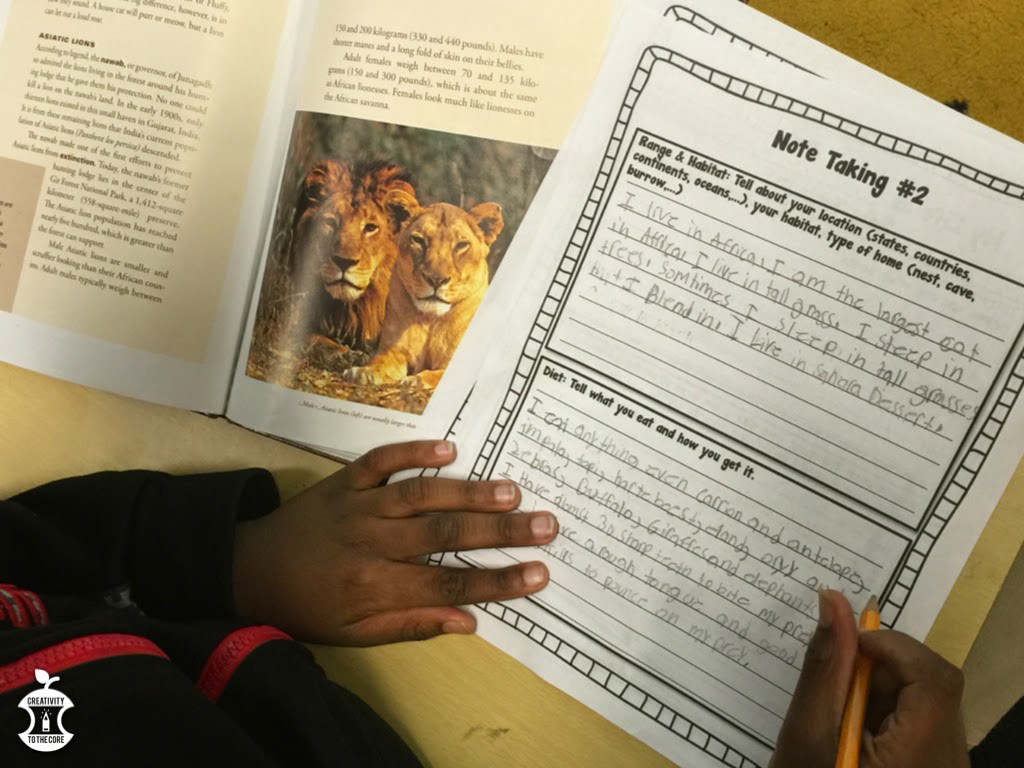 |
| This is a Skill Practice center focused on point of view. Students were researching an animal and then writing about the animal from the animal’s point of view. |

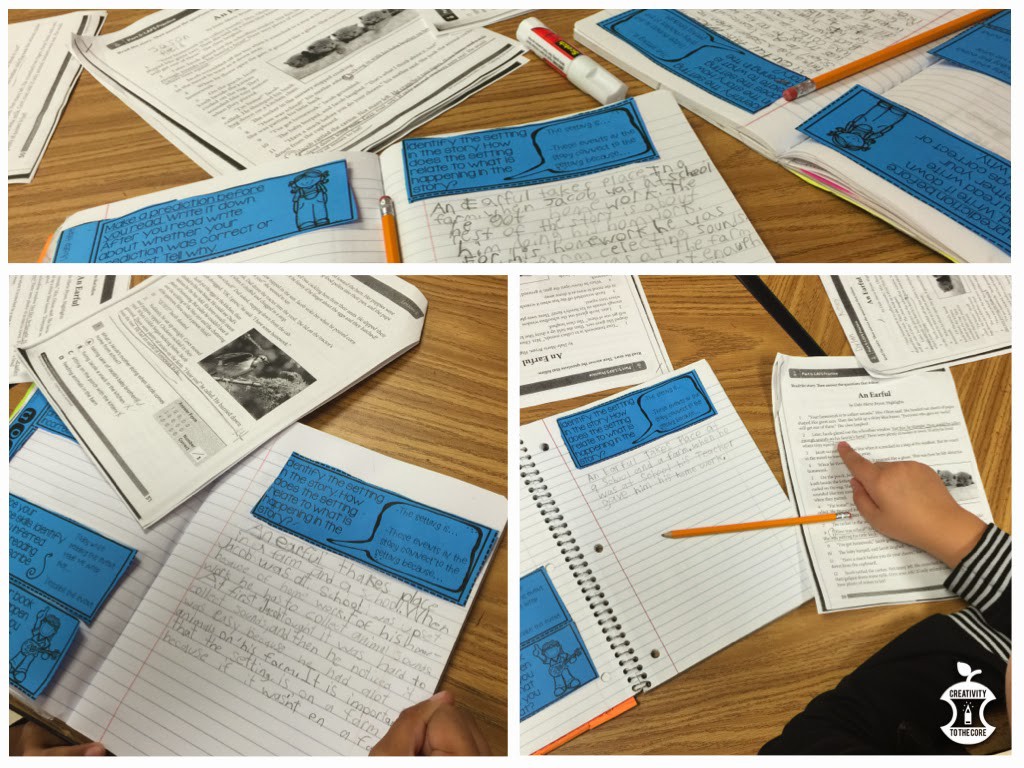


Ummm I would switch to third grade in a heartbeat to coteach with you!! …and the 18 student maximum, WOW!!! I love my firsties, but it can be so hard to get through everything with 28 students and no help.
Your room looks amazing! I loved getting a peek into your reading block. You and your teaching partner are rockin' it!
Lauren
Aw! Thank you, Lauren! 🙂 I cannot imagine 28 first graders! Whew!
This was a great read! I am a 4th grade teacher in Orlando…so we are getting nervous about the state tests coming up. Your reading block sounds so wonderful, I hardly feel like I have time for anything during the day. How does the main teacher fit in social studies, science, and writing? We had to switch off social studies/reading every two weeks because we couldn't get it all in.
I'm in Ft. Lauderdale, so I TOTALLY understand the testing concerns…31 days! We have about 10 minutes for mini lessons and 60 minutes for small groups. The main teacher and I always integrate social studies, science, and writing into our reading block. We do not have separate time throughout the day for those. Our readings and discussions are about social studies and science topics. The only other topic that the "main teacher" teaches alone is math. Everything else is done as content area reading. 🙂